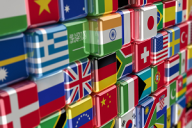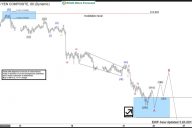Podcast: Play in new window | Play in new window (Duration: 13:17 — 6.1MB)
DOW + 91 = 17,810
SPX + 10 = 2063
NAS + 11 = 4712
10 YR YLD – .02 = 2.32%
OIL + .77 = 76.62
GOLD + 5.80 = 1201.30
SILV + .15 = 16.50
Record highs for the Dow and the S&P.
China has cut interest rates for the first time in more than 2 years. The first thought is that China is trying to stimulate growth for a slowing economy. However, in making the announcement, the People’s Bank of China tried to emphasize that the economy is growing within a reasonable range, and the rate cut was not about spurring growth. Instead, they emphasized the need to reduce corporate financing costs to help struggling companies. So, you might think that lower rates would only encourage more borrowing in a country that already has too much debt. What the Chinese central bank appears to be doing is making it feasible to refinance the existing debt at lower rates, which would allow Chinese companies to lessen their debt burdens. So, in this way, lower rates is a way to deleverage.
And this is not the first attempt at reducing borrowing costs. Since September the People’s Bank of China has provided more than $130 billion in medium term loans to banks on the condition they lower borrowing rates for small businesses; trying to channel to certain industries, including small and rural businesses as well as government-financed low-income housing projects, without adding excess capacity to other industries, such as steel and real estate. The problem is that this did not work; most of China’s piecemeal efforts to make lending more affordable have not worked, and so the next step was to cut rates. And despite the official story, China is concerned about growth. China’s economy, the world’s second-largest after the US, grew by 7.3% year-over-year in the third quarter, its slowest pace in more than five years, and short of their 7.5% growth target.
Meanwhile, a lack of real demand for loans, rather than a shortage of credit, is holding the Chinese economy back; and whatever the justification, the People’s Bank of China is loosening monetary policy, and this is probably not the last rate cut. China joins the European Central Bank and the Bank of Japan in stimulative monetary policy, which raises the question of whether we are in a new round of currency wars or economic battles due to slow growth. Probably not, but this does add extra cash into the global financial system, and the global markets love free money.











No Comments